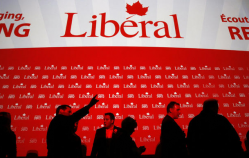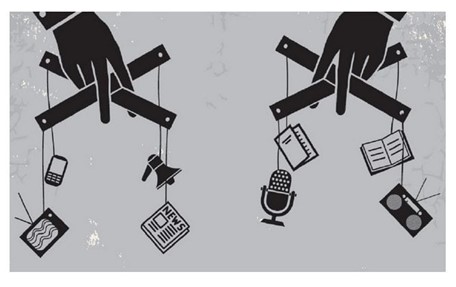Task-Farce: Reefer Madness 2.0!

 This article details my analysis of the recommendations brought forward by the Liberal Government’s “Task Force on Cannabis Legalization and Regulation.” Full text of the report can be found here:
This article details my analysis of the recommendations brought forward by the Liberal Government’s “Task Force on Cannabis Legalization and Regulation.” Full text of the report can be found here:
Task force recommendations.
As I see, and perhaps you’ll agree, their advice is based on “reefer madness 2.0” – the myth of inherent harm done to the developing mind of young people – combined with an interest in protecting the profit margins of big business and fighting the “black market” criminal boogeyman.
The problem, the myths presented in their report take root in evidence compiled by researchers who limit focus groups and ignore general population statistics – because relevant stats don’t suggest cannabis makes kids stupid or crazy.
The task force’s findings come from the prohibition mindset. And their recommendations deny our human medical autonomy, without mention of proper use or care for harm reduction to mitigate cannabis misuse amongst teens.
Here are more highlights…
Personal Cultivation (pp. 35-37)
Advice from the Task Force:
“A limit of four plants per residence, A maximum height limit of 100 cm on the plants, A prohibition on dangerous manufacturing processes, Reasonable security measures to prevent theft and youth access, Oversight and approval by local authorities.” (p. 37)
Why their seeds won’t sow:
There is no reason to limit the number of plants someone can grow in their backyard, or how tall they can be, or how secure they need to be, and there is no need for any inspections beyond those required for any complex electric lighting system – if the plants are grown with natural light, there is no need for any inspections, period.
One of the few valid, reasonable highlights of this report is a prohibition on dangerous manufacturing processes. My hats off to the task force for doing their best to prevent any big kaboom in our shared communities.
That being said, the Task Force fails to mention the only concentrates dangerous to manufacture are those made with volatile solvents – mostly butane hash oil based concentrates. This is non-specific advice for a specific worry, and — don’t tread on me — may evolve into a prohibition on the personal production of all concentrates, even water hash – and/or could mean solvent-based concentrate production will be banned even in controlled non-residential laboratories.
Distribution – Retail (pp. 33-35)
Advice from the Task Force (excerpt):
“No co-location of alcohol or tobacco and cannabis sales, wherever possible. When co-location cannot be avoided, appropriate safeguards must be in place. Limit on the density and location of storefronts, including appropriate distance from schools, community centers, public parks, etc.” (p. 35)
Why their plant won’t flower:
“Co-use” of cannabis and alcohol was brought up many times as a bad thing, but “sending the message to young people that cannabis was a hard drug like alcohol and tobacco” was not mentioned as a concern.
Of course this section – like all sections – is fuelled on references to “the kids could become stupid/crazy so we’d better prohibit” mythology. This allows discriminatory licensing practices, which props up the black market, and all the dangers hitherto.
Place of Use (pp. 40-41)
Advice from the Task Force:
“The Task Force recommends that jurisdictions extend the current restrictions on public smoking of tobacco products to the smoking of cannabis products and to cannabis vaping products. The Task Force further recommends that jurisdictions be able to permit dedicated places to consume cannabis such as cannabis lounges and tasting rooms if they wish to do so, with no federal prohibition. Safeguards to prevent the co-consumption with alcohol, prevent underage use, and protect health and safety should be implemented.”
Why their product is bunk:
To ban public smoking and vaping makes no more sense than the banning of public incense burning. Unlike tobacco, cannabis has not been grown in soil that has been treated with radioactive chemical fertilizers for the last 150 years and cannabis smoke – unlike tobacco smoke – is not associated with lung cancer. If anything it’s associated with a decrease in lung cancer.
This in mind, I do agree with the Task Force on the issue of allowing smoking/vaping lounges – as an essential part of cannabis harm reduction. If lounges are located next to entertainment districts they can significantly decrease the amount of cannabis-impaired driving that would otherwise occur.
Promotion, Advertising and Marketing Restrictions (pp. 18-20)
Advice from the Task Force (excerpt):
“Require that any therapeutic claims made in advertising conform to applicable legislation. Resource and enable the detection and enforcement of advertising and marketing violations, including via traditional and social media.” (p. 20)
Why this pipe doesn’t draw:
The term “applicable legislation” in the Task Force’s advice is left open to interpretation. The Task Force supplies two options, either “restrictions for drugs or natural health products in the Food and Drugs Act.” If it’s natural health products, then these restrictions could easily be met, as they require evidence that may include:
“… clinical trial data or references to published studies, journals, pharmacopeias and traditional resources.”
However, Health Canada is planning to overhaul the rules to Natural Health Product health claims, requiring they meet the same requirements as drugs – clinical trials that can cost hundreds of millions of dollars.
The cannabis community must align with the herbal medicine community and stop this overhaul scam from happening, or herbal health claims will be limited to what billionaires wish to make. And if history is any indication, which it always is, they don’t wish to make anything beyond a profit. Their money is put in proprietary medicine, synthetics and monopolies.
Personal Possession (pp. 39-40)
Advice from the Task Force (excerpt):
“A limit of 30 grams be implemented for the personal possession of non-medical dried cannabis in public.”
Why this misses the nail:
Cannabis is about as dangerous as coffee beans, and therefore should be regulated in much the same way.
Any arguments to the contrary depend on the “reefer madness 2.0” delusion I’ve mentioned, aka “myths of inherent impairment”. There will no doubt be many occasions where a group of people go on an adventure together, and one in the group has been tasked by the rest to gather enough cannabis for the entire group – well over the 30-gram limit. These people are harmless and should not be punished.
Minimum Age (pp. 16-18)
Advice from the Task Force:
“The Task Force recommends that the federal government set a national minimum age of purchase of 18, acknowledging the right of provinces and territories to harmonize it with their minimum age of purchase of alcohol.”
Why this greens out:
Aside from the complete denial of the general population statistics that prove cannabis is not making our kids stupid or crazy, the other ideas missing from the Task Force’s analysis on minimum age were the following facts:
“… youth (age 12-17) account for 24% of those accused of cannabis offences …”
Youth were much more likely to die of cannabis prohibition or teen suicide than from cannabis-related problems.
In reality, cannabis is the safest, cheapest and most effective relaxant and anti-depressant known.
Stop The Madness 2.0!
In 1969, Anthropologist Margaret Mead told senators that marijuana should be legalized for anyone over 16 and that drinking and voting ages should match the draft age. … She said marijuana “doesn’t have the toxic effects that cigarettes have” and is milder than liquor. Therefore, she said, it should be permitted at a younger age than tobacco and alcohol. Mead continued to say, “It is a new form of tyranny by the old over the young. You have the adult with a cocktail in one hand and a cigarette in the other saying ‘you cannot …’ to the child. This is untenable.”
33 years later, the Canadian Senate recommended amendments to the Controlled Drugs And Substances Act, aiming “To permit persons over the age of 16 to procure cannabis and its derivatives at duly licensed distribution centres…”
And now, in 2017 – 14 months after we voted to end prohibition – we remain under the same fog of delusion and control. Once again, agents of agenda hide behind the shield of “the children,” to further their cause of profit, dependance and limits on our personal freedoms.



